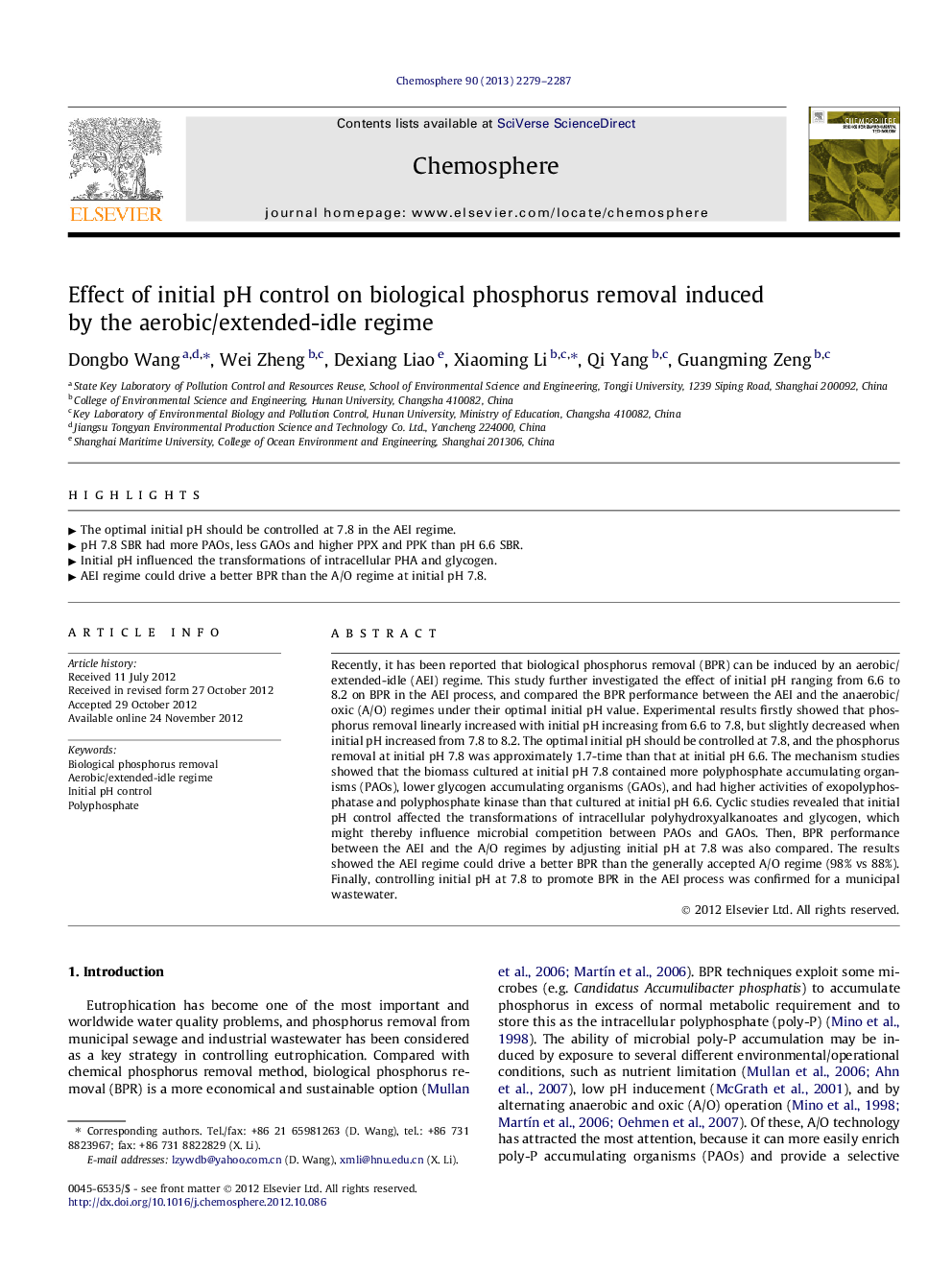| Article ID | Journal | Published Year | Pages | File Type |
|---|---|---|---|---|
| 4409683 | Chemosphere | 2013 | 9 Pages |
Recently, it has been reported that biological phosphorus removal (BPR) can be induced by an aerobic/extended-idle (AEI) regime. This study further investigated the effect of initial pH ranging from 6.6 to 8.2 on BPR in the AEI process, and compared the BPR performance between the AEI and the anaerobic/oxic (A/O) regimes under their optimal initial pH value. Experimental results firstly showed that phosphorus removal linearly increased with initial pH increasing from 6.6 to 7.8, but slightly decreased when initial pH increased from 7.8 to 8.2. The optimal initial pH should be controlled at 7.8, and the phosphorus removal at initial pH 7.8 was approximately 1.7-time than that at initial pH 6.6. The mechanism studies showed that the biomass cultured at initial pH 7.8 contained more polyphosphate accumulating organisms (PAOs), lower glycogen accumulating organisms (GAOs), and had higher activities of exopolyphosphatase and polyphosphate kinase than that cultured at initial pH 6.6. Cyclic studies revealed that initial pH control affected the transformations of intracellular polyhydroxyalkanoates and glycogen, which might thereby influence microbial competition between PAOs and GAOs. Then, BPR performance between the AEI and the A/O regimes by adjusting initial pH at 7.8 was also compared. The results showed the AEI regime could drive a better BPR than the generally accepted A/O regime (98% vs 88%). Finally, controlling initial pH at 7.8 to promote BPR in the AEI process was confirmed for a municipal wastewater.
► The optimal initial pH should be controlled at 7.8 in the AEI regime. ► pH 7.8 SBR had more PAOs, less GAOs and higher PPX and PPK than pH 6.6 SBR. ► Initial pH influenced the transformations of intracellular PHA and glycogen. ► AEI regime could drive a better BPR than the A/O regime at initial pH 7.8.
